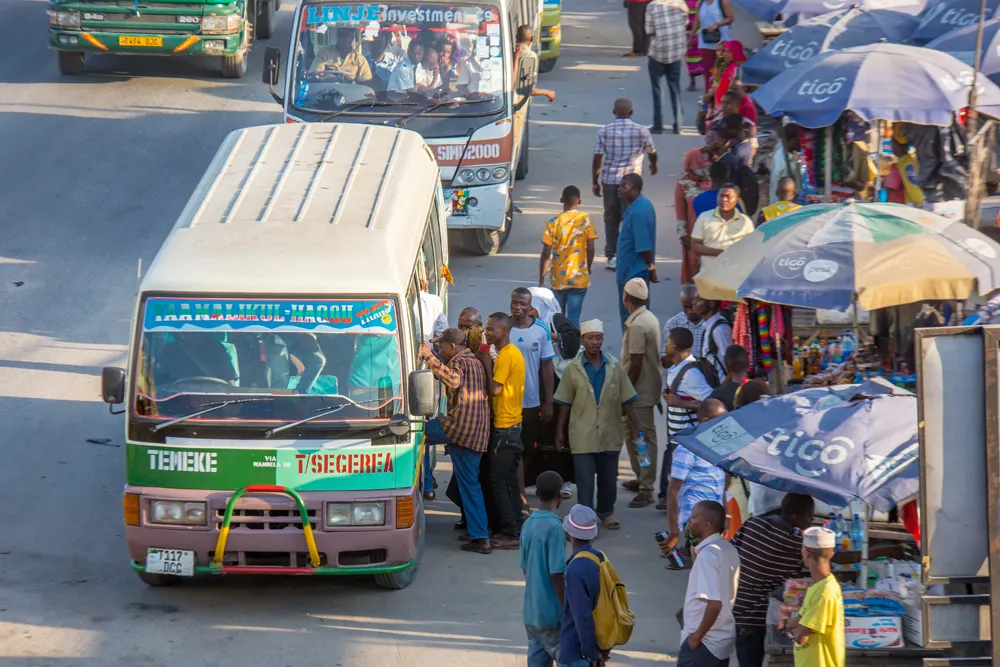A new report from the International Transport forum at the OECD, International Experiences on Public Transport Provision in Rural Areas, claims that, to ensure continued access to public transport for citizens in rural areas, the definition of public transport should be reconsidered by public authorities.
Low population density and competition from private cars make it difficult to operate profitable commercial public transport services in rural areas, as costs per passenger are much higher than in dense
May 12, 2015
Read time: 2 mins
A new report from the International Transport forum at the 7353 OECD, International Experiences on Public Transport Provision in Rural Areas, claims that, to ensure continued access to public transport for citizens in rural areas, the definition of public transport should be reconsidered by public authorities.
Low population density and competition from private cars make it difficult to operate profitable commercial public transport services in rural areas, as costs per passenger are much higher than in densely populated cities. Maintaining service levels through public subsidies is becoming more difficult in view of rising operating costs and constrained public funding ‑ leading to a vicious circle of reduced service or higher fares to contain rising costs.
Recent trends in mobility offer opportunities to alleviate the situation: New ways of providing information through mobile technology, new actors and services in the public transport market and changing user expectations and choices regarding their mobility are reshaping transport provision and demand. Yet, to profit from new mobility services that work also for rural areas, these developments should be reflected in changes in the legislative framework around public transport.
The report was commissioned from ITF by the Finnish Ministry of Transport and Communications and looks at international experiences on containing the rise in costs associated with public transport services in rural areas, showcases efficient solutions and illustrates new ways of organising public transport services based on case studies from the UK, France, Norway and Japan.
According to the report, international experiences show: New ways of information provision are changing the public transport market; a major change in the perception of the concept of public transport, away from an exclusive focus on scheduled services and evolving to a more general provision of transport services accessible to any citizen; relaxing quantitative taxi regulation can enable new innovative solutions.
In addition, demand-responsive transport is seen as one of the key options to meet future public transport challenges. The report also claims that new forms of public transport do not diminish the importance of traditional public transport.
It also says there is significant potential for savings through coordination, such as pooling of passengers and combining non-passenger transport services with passenger transport.
Low population density and competition from private cars make it difficult to operate profitable commercial public transport services in rural areas, as costs per passenger are much higher than in densely populated cities. Maintaining service levels through public subsidies is becoming more difficult in view of rising operating costs and constrained public funding ‑ leading to a vicious circle of reduced service or higher fares to contain rising costs.
Recent trends in mobility offer opportunities to alleviate the situation: New ways of providing information through mobile technology, new actors and services in the public transport market and changing user expectations and choices regarding their mobility are reshaping transport provision and demand. Yet, to profit from new mobility services that work also for rural areas, these developments should be reflected in changes in the legislative framework around public transport.
The report was commissioned from ITF by the Finnish Ministry of Transport and Communications and looks at international experiences on containing the rise in costs associated with public transport services in rural areas, showcases efficient solutions and illustrates new ways of organising public transport services based on case studies from the UK, France, Norway and Japan.
According to the report, international experiences show: New ways of information provision are changing the public transport market; a major change in the perception of the concept of public transport, away from an exclusive focus on scheduled services and evolving to a more general provision of transport services accessible to any citizen; relaxing quantitative taxi regulation can enable new innovative solutions.
In addition, demand-responsive transport is seen as one of the key options to meet future public transport challenges. The report also claims that new forms of public transport do not diminish the importance of traditional public transport.
It also says there is significant potential for savings through coordination, such as pooling of passengers and combining non-passenger transport services with passenger transport.










